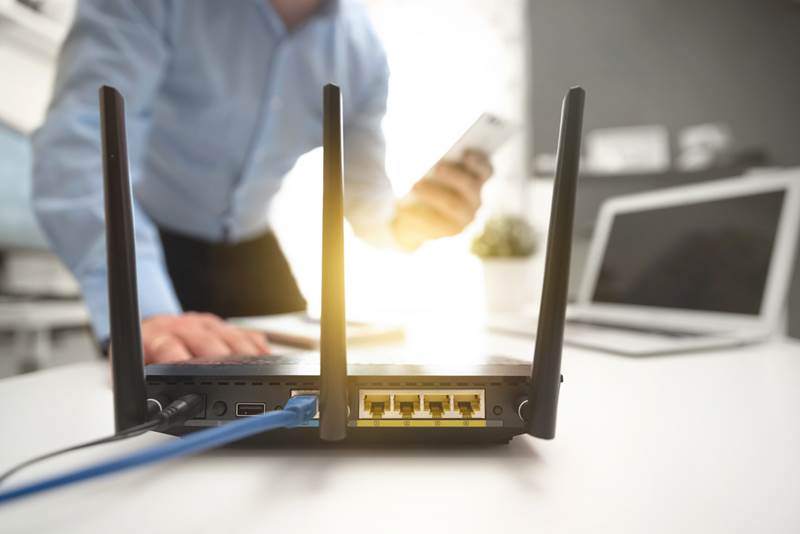Introduction
In our increasingly interconnected digital landscape, grasping the fundamentals of networking is essential for both professionals and everyday users alike. A pivotal element of networking involves understanding Internet Protocol (IP) addresses and port numbers. This article will explore the importance of IP addresses, the function of port numbers, and provide a focused analysis of the specific address “198.168.11.188.5000”
IP addresses serve as unique identifiers for devices on a network, enabling them to communicate with one another. They play a critical role in routing data across the internet, ensuring that information reaches its intended destination. Each IP address consists of a series of numbers separated by periods, which can be categorized into two primary types: IPv4 and IPv6. IPv4 addresses, like the one being analyzed, are composed of four sets of numbers ranging from 0 to 198.168.11.188.5000 while IPv6 addresses are longer and designed to accommodate.
Port numbers, on the other hand, are essential for distinguishing different services and applications running on a single device. They function like doors, allowing data to enter and exit specific applications without confusion. Each service on a device typically operates on a designated port, and the combination of an IP address and a port number specifies a unique endpoint for communication. For instance, in the address “198.168.11.188.5000” the IP address identifies the device, while the port number 5000 directs the data to a particular application or service running on that device.
What is an IP Address?
An IP address functions as a distinct identifier for devices within a network, enabling seamless communication among them. You can liken it to a postal address that locates your computer in the vast expanse of the internet.. IPv4 addresses consist of four sets of numbers separated by periods, while IPv6 addresses are longer and designed to accommodate the increasing number of devices connecting to the internet. Understanding these two formats is essential for grasping how devices identify and communicate with each other in our interconnected world.
IPv4 vs. IPv6
- IPv4: This is the most prevalent format for IP addresses, comprising four sets of numbers divided by periods (for instance, 192.168.1.1). However, as the number of devices accessing the internet continues to rise, the IPv4 format is facing limitations in terms of available addresses.
- IPv6: To overcome the constraints of IPv4, IPv6 was introduced. This format consists of eight groups of four hexadecimal digits, allowing for a significantly expanded address space. A typical example of an IPv6 address is 2001:0db8:85a3:0000:0000:8a2e:0370:7334. The adoption of IPv6 is crucial for supporting the ever-growing network of connected devices in our digital age.
The Structure of an IP Address
Every IP address is composed of two main components: the network part and the host part.
- Network Part: This segment specifies the network to which the device is connected.
- Host Part: This portion identifies the individual device within that network. Together, these two components work to ensure proper communication between devices in a networked environment.
What is Port Number?
A port number is a crucial element of the internet protocol suite that facilitates communication for multiple applications over a single IP address. Each application operating on a device is assigned a specific port to listen for incoming data.
Port numbers fall into various categories based on their usage:
- Well-Known Ports (0-1023): These ports are allocated for widely used protocols, such as HTTP (port 80) and HTTPS (port 443).
- Registered Ports (1024-49151): This range is designated for software applications that require specific ports for their functionality.
- Dynamic/Private Ports (49152-65535): These ports are frequently used for temporary or private connections.
Now, let’s examine the address “198.168.11.188.5000.”
Understanding the IP Address: The address 198.168.11.188 closely resembles a private IP address, yet it begins with “198,” deviating from the more typical prefixes “192.168.” or “10.” which are reserved for private networks. If it were indeed a local address, devices would utilize it for communication within a private network.
Public vs. Private: It’s essential to differentiate between public and private IP addresses. Private IP addresses function within a local network and are not routable on the internet, while public IP addresses are accessible globally, allowing devices to communicate over the internet.
Understanding the Significance of Port Number 5000
Port number 5000 is frequently associated with various applications, particularly in development contexts.
Common Applications: This port is often utilized by web servers, especially within development frameworks like Flask and Django. Additionally, it may be employed by applications such as Universal Plug and Play (UPnP) and Docker containerization.
Web Services: When accessing the address 198.168.11.188.5000, you may be connecting to a web application hosted on that server. This could involve interacting with REST APIs or web applications designed for specific tasks, such as testing or development purposes.
Accessing the IP Address and Port
Using a Web Browser: Attempting to access 198.168.11.188.5000 in your web browser may yield different results:
- Successful Connection: If a server is operational at that IP address and port, you may encounter a web interface, enabling interaction with the application.
- Error Messages: Conversely, if no service is hosted at that IP address and port, you may see an error message indicating that the site is unreachable.
Security Considerations
When accessing IP addresses and ports, particularly those within private networks, it’s essential to understand the security implications:
- Firewall Configuration: Ensure that firewalls are set up to permit or block traffic on specific ports, safeguarding sensitive data and thwarting unauthorized access.
- Access Control: Implement security measures such as authentication and authorization to ensure that only authorized users can access applications running on designated ports.
- Encryption: Employ protocols like HTTPS to encrypt data transmitted across the network, protecting it from potential interception by malicious actors.
Troubleshooting Connection Issues
If you encounter difficulties when trying to access 198.168.11.188.5000, consider the following troubleshooting steps:
- Ping the IP Address: Use a command prompt or terminal to ping the IP address and verify if the server is reachable.
- Check Port Status: Utilize utilities such as netstat or telnet to determine if the port is open and ready for connections.
- Firewall Settings: Review your firewall settings to ensure that they allow traffic through port 5000.
- Application Status: Confirm that the application intended to operate on port 5000 is running smoothly and correctly.
By following these guidelines, you can better navigate the complexities of accessing and utilizing port number 5000, enhancing your overall networking experience.
Use Cases of IP Address and Port Number
The pairing of an IP address and port number, such as 198.168.11.188.5000, plays a crucial role in various sectors. This combination is essential for enabling specific applications and services to communicate effectively over the internet. In different industries, it facilitates tasks such as hosting web applications, managing data exchanges, and running development environments. By using a unique address and designated port, organizations can streamline operations, enhance connectivity, and support the efficient transfer of information. This approach allows for the simultaneous management of multiple services and applications, optimizing resource use and improving overall performance in an increasingly digital landscape.
Web Development
In the realm of web development, particularly when utilizing frameworks such as Flask and Django, port 198.168.11.188.5000 is commonly employed for local application testing. This practice provides developers with a convenient environment for debugging and making necessary modifications before launching the application into a production setting. By using this specific port, developers can quickly identify issues and fine-tune their applications, ensuring optimal functionality and user experience once deployed. This step is vital in the development process, as it allows for thorough testing and adjustments without the complications that may arise in a live environment.
IoT Devices
In the context of the Internet of Things (IoT), devices typically rely on designated IP addresses and port numbers for communication. For instance, a smart home device might utilize the address 198.168.11.188:5000 to establish a connection with a server, enabling it to transmit and receive commands effectively. This method of communication ensures that IoT devices can interact seamlessly, facilitating functionalities such as remote control, automation, and real-time data exchange. By leveraging specific IP addresses and ports, these devices can efficiently execute tasks and enhance the user experience in smart environments.
Game Servers
Online gaming platforms frequently utilize designated IP addresses and port numbers to facilitate connections between players and servers. This setup enables multiplayer interactions and creates immersive online gameplay experiences. By connecting to specific addresses and ports, gamers can join shared environments, engage in real-time competition, and collaborate with others around the globe. This structured communication framework is essential for maintaining smooth and responsive gameplay, ensuring that all participants can interact seamlessly, thereby enhancing the overall gaming experience.
FAQs
1. What is an IP address?
An IP address is a unique numerical label assigned to each device connected to a computer network that uses the Internet Protocol for communication. It serves as an identifier for devices, similar to a postal address.
2. What is the significance of a port number?
A port number is used to identify specific processes or services running on a device. It allows multiple applications to communicate over a single IP address by directing incoming traffic to the correct application.
3. Why is port 5000 commonly used in web development?
Port 5000 is frequently utilized by web development frameworks like Flask and Django for local testing. It enables developers to debug and adjust their applications easily before deploying them to a production environment.
4. How do IoT devices use IP addresses and ports?
IoT devices use specific IP addresses and port numbers to communicate with servers, allowing them to send and receive commands. This facilitates the operation of smart devices within a connected environment.
5. How does online gaming utilize IP addresses and ports?
In online gaming, specific IP addresses and ports are used to connect players to game servers. This allows for real-time interactions, enabling multiplayer gameplay and collaboration among users.
Conclusion
Understanding the role of IP addresses and port numbers is essential in today’s interconnected world. These elements form the backbone of communication across various applications, from web development and IoT to online gaming. As technology continues to advance, the significance of these identifiers will only grow, highlighting the need for developers, businesses, and users to grasp their importance. By utilizing IP addresses and ports effectively, individuals can enhance connectivity, streamline operations, and create engaging experiences in the digital landscape.
Don’t miss out on updates and alerts – stay connected!” News Week Blog



